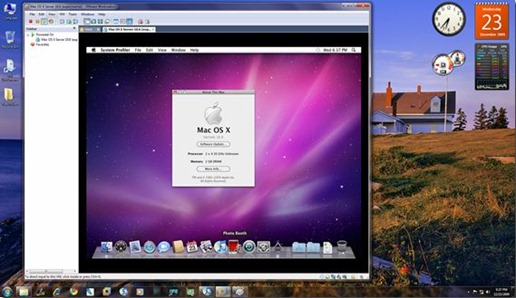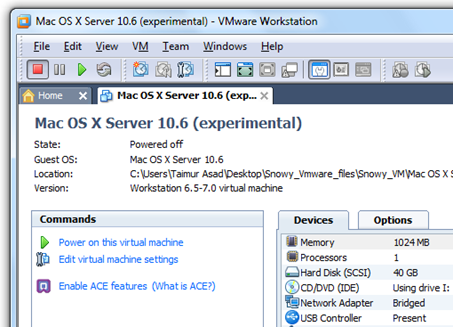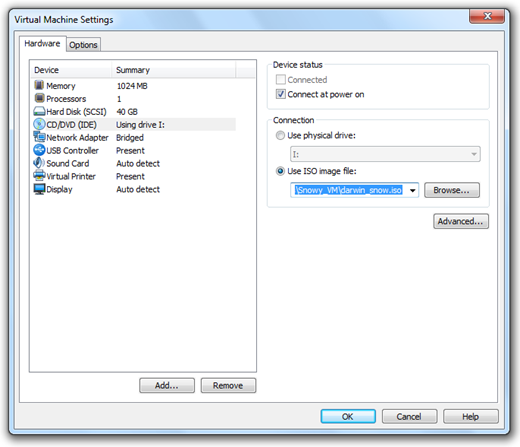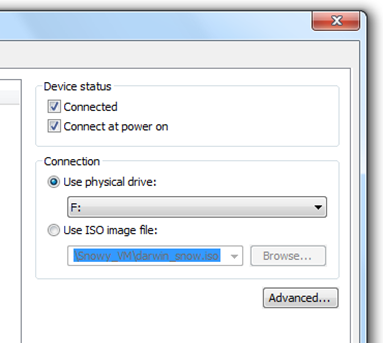A
virtual private network (
VPN) is a network that uses a public telecommunication infrastructure and their technology such as the
Internet, to provide remote offices or individual users with secure access to their organization's network. It aims to avoid an expensive system of owned or leased lines that can be used by only one organization. The goal of a VPN is to provide the organization with the same secure capabilities but at a much lower cost.
It
encapsulates data transfers between two or more
networked devices not on the same
private network so as to keep the transferred data private from other devices on one or more intervening
local or
wide area networks. There are many different classifications, implementations, and uses for VPNs.
History
Until the end of the 1990s the computers in
computer networks connected through very expensive
leased lines and/or
dial-up phone lines. It could cost thousands of dollars for 56kbps lines or tens of thousands for T1 lines, depending on the distance between the sites.
Virtual Private Networks reduce network costs because they avoid a need for many leased lines that individually connect to the Internet. Users can exchange private data securely, making the expensive leased lines redundant.
[1].
VPN technologies have myriad protocols, terminologies and marketing influences that define them. For example, VPN technologies can differ in:
- The protocols they use to tunnel the traffic
- The tunnel's termination point, i.e., customer edge or network provider edge
- Whether they offer site-to-site or remote access connectivity
- The levels of security provided
- The OSI layer they present to the connecting network, such as Layer 2 circuits or Layer 3 network connectivity
Some classification schemes are discussed in the following sections.
Security Mechanisms
Secure VPNs use
cryptographic tunneling protocols to provide
confidentiality by blocking
intercepts and
packet sniffing, allowing sender
authentication to block
identity spoofing, and provide
message integrity by preventing message alteration.
Secure VPN protocols include the following:
Authentication
unnel endpoints must authenticate before secure VPN tunnels can establish.
User-created remote access VPNs may use
passwords,
biometrics,
two-factor authentication or other
cryptographic methods.
Network-to-network tunnels often use passwords or
digital certificates, as they permanently store the key to allow the tunnel to establish automatically and without intervention.
Routing
Tunneling protocols can be used in a
point-to-point topology that would theoretically not be considered a VPN, because a VPN by definition is expected to support arbitrary and changing sets of network nodes. But since most
router implementations support software-defined tunnel interface, customer-provisioned VPNs often are simply defined tunnels running conventional routing protocols.
On the other hand provider-provided VPNs (PPVPNs), need to support coexisting multiple VPNs, hidden from one another, but operated by the same service provider.
PPVPN Building blocks
Depending on whether the PPVPN runs in layer 2 or layer 3, the building blocks described below may be L2 only, L3 only, or combine them both.
Multiprotocol Label Switching (MPLS) functionality blurs the L2-L3 identity.
RFC 4026 generalized the following terms to cover L2 and L3 VPNs, but they were introduced in
RFC 2547.
[6]
- Customer edge device. (CE)
a device at the customer premises, that provides access to the PPVPN. Sometimes it's just a demarcation point between provider and customer responsibility. Other providers allow customers to configure it.
- Provider edge device (PE)
A PE is a device, or set of devices, at the edge of the provider network, that presents the provider's view of the customer site. PEs are aware of the VPNs that connect through them, and maintain VPN state.
- Provider device (P)
A P device operates inside the provider's core network, and does not directly interface to any customer endpoint. It might, for example, provide routing for many provider-operated tunnels that belong to different customers' PPVPNs. While the P device is a key part of implementing PPVPNs, it is not itself VPN-aware and does not maintain VPN state. Its principal role is allowing the service provider to scale its PPVPN offerings, as, for example, by acting as an aggregation point for multiple PEs. P-to-P connections, in such a role, often are high-capacity optical links between major locations of provider.
User-visible PPVPN services
This section deals with the types of VPN considered in the IETF; some historical names were replaced by these terms.
OSI Layer 1 services
Virtual private wire and private line services (VPWS and VPLS)
In both of these services, the provider does not offer a full routed or bridged network, but provides components to build customer-administered networks. VPWS are point-to-point while VPLS can be point-to-multipoint. They can be Layer 1 emulated circuits with no data link structure.
The customer determines the overall customer VPN service, which also can involve routing, bridging, or host network elements.
An unfortunate acronym confusion can occur between Virtual Private Line Service and Virtual Private LAN Service; the context should make it clear whether "VPLS" means the layer 1 virtual private line or the layer 2 virtual private LAN.
OSI Layer 2 services
Virtual LAN
A Layer 2 technique that allows for the coexistence of multiple LAN broadcast domains, interconnected via trunks using the
IEEE 802.1Q trunking protocol. Other trunking protocols have been used but have become obsolete, including Inter-Switch Link (ISL), IEEE 802.10 (originally a security protocol but a subset was introduced for trunking), and ATM LAN Emulation (LANE).
- Virtual private LAN service (VPLS)
Developed by IEEE, VLANs allow multiple tagged LANs to share common trunking. VLANs frequently comprise only customer-owned facilities. The former
[clarification needed] is a layer 1 technology that supports emulation of both point-to-point and point-to-multipoint topologies. The method discussed here extends Layer 2 technologies such as
802.1d and
802.1q LAN trunking to run over transports such as
Metro Ethernet.
As used in this context, a
VPLS is a Layer 2 PPVPN, rather than a private line, emulating the full functionality of a traditional
local area network (LAN). From a user standpoint, a VPLS makes it possible to interconnect several LAN segments over a packet-switched, or optical, provider core; a core transparent to the user, making the remote LAN segments behave as one single LAN.
[7]
In a VPLS, the provider network emulates a learning bridge, which optionally may include VLAN service.
- Pseudo wire (PW)
PW is similar to VPWS, but it can provide different L2 protocols at both ends. Typically, its interface is a WAN protocol such as
Asynchronous Transfer Mode or
Frame Relay. In contrast, when aiming to provide the appearance of a LAN contiguous between two or more locations, the Virtual Private LAN service or IPLS would be appropriate.
- IP-only LAN-like service (IPLS)
A subset of VPLS, the CE devices must have L3 capabilities; the IPLS presents packets rather than frames. It may support IPv4 or IPv6.
OSI Layer 3 PPVPN architectures
This section discusses the main architectures for PPVPNs, one where the PE disambiguates duplicate addresses in a single routing instance, and the other, virtual router, in which the PE contains a virtual router instance per VPN. The former approach, and its variants, have gained the most attention.
One of the challenges of PPVPNs involves different customers using the same address space, especially the IPv4 private address space
[8]. The provider must be able to disambiguate overlapping addresses in the multiple customers' PPVPNs.
- BGP/MPLS PPVPN
In the method defined by
RFC 2547, BGP extensions advertise routes in the IPv4 VPN address family, which are of the form of 12-byte strings, beginning with an 8-byte
Route Distinguisher (RD) and ending with a 4-byte IPv4 address. RDs disambiguate otherwise duplicate addresses in the same PE.
PEs understand the topology of each VPN, which are interconnected with MPLS tunnels, either directly or via P routers. In MPLS terminology, the P routers are
Label Switch Routers without awareness of VPNs.
- Virtual router PPVPN
The Virtual Router architecture,
[9][10] as opposed to BGP/MPLS techniques, requires no modification to existing routing protocols such as BGP. By the provisioning of logically independent routing domains, the customer operating a VPN is completely responsible for the address space. In the various MPLS tunnels, the different PPVPNs are disambiguated by their label, but do not need routing distinguishers.
Virtual router architectures do not need to disambiguate addresses, because rather than a PE router having awareness of all the PPVPNs, the PE contains multiple virtual router instances, which belong to one and only one VPN.
Plaintext Tunnels
Some virtual networks may not use encryption to protect the data contents. While VPNs often provide security, an unencrypted
overlay network does not neatly fit within the secure or trusted categorization. For example a tunnel set up between two hosts that used
Generic Routing Encapsulation (GRE) would in fact be a virtual private network, but neither secure nor trusted.
Besides the GRE example above, native
plaintext tunneling protocols include
Layer 2 Tunneling Protocol (L2TP) when it is set up without
IPsec and
Point-to-Point Tunneling Protocol (PPTP) when it does not use
Microsoft Point-to-Point Encryption (MPPE).
Trusted delivery networks
Trusted VPNs do not use cryptographic
tunneling, and instead rely on the security of a single provider's network to protect the traffic.
From the security standpoint, VPNs either trust the underlying delivery network, or must enforce security with mechanisms in the VPN itself. Unless the trusted delivery network runs among physically secure sites only, both trusted and secure models need an authentication mechanism for users to gain access to the VPN.
VPNs in mobile environments
Mobile VPNs handle the special circumstances when an endpoint of the VPN is not fixed to a single
IP address, but instead roams across various networks such as data networks from cellular carriers or between multiple
Wi-Fi access points.
[14] Mobile VPNs have been widely used in
public safety, where they give law enforcement officers access to mission-critical applications, such as
computer-assisted dispatch and criminal databases, as they travel between different subnets of a mobile network.
[15] They are also used in
field service management and by healthcare organizations,
[16] among other industries.
Increasingly, mobile VPNs are being adopted by mobile professionals and
white-collar workers who need reliable connections.
[16] They allow users to roam seamlessly across networks and in and out of wireless-coverage areas without losing application sessions or dropping the secure VPN session. A conventional VPN cannot survive such events because the
network tunnel is disrupted, causing applications to disconnect, time out
[14], or fail, or even cause the computing device itself to
crash.
[16]
Instead of logically tying the endpoint of the network tunnel to the physical IP address, each tunnel is bound to a permanently associated IP address at the device. The mobile VPN software handles the necessary network authentication and maintains the network sessions in a manner transparent to the application and the user.
[14] The
Host Identity Protocol (HIP), under study by the
Internet Engineering Task Force, is designed to support mobility of hosts by separating the role of
IP addresses for host identification from their locator functionality in an IP network. With HIP a mobile host maintains its logical connections established via the host identity identifier while associating with different IP addresses when roaming between access networks.
Reference :
Virtual_private_network



















